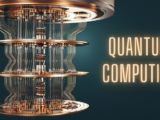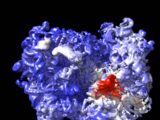
A quantum computing breakthrough could occur with only a few hundred, rather than millions, of qubits by employing a novel error-correction system
May 2, 2024A quantum computing breakthrough could be on the horizon, as researchers at startup Nord Quantique have developed an individual error-correcting physical qubit that could significantly reduce the number of qubits needed for quantum advantage. This advancement could lead to quantum computers surpassing the capabilities of the fastest supercomputers sooner than expected.
In classical computing, bits encode data as either 1 or 0, while qubits, relying on quantum mechanics, can encode data as a superposition of 1 and 0, enabling parallel processing through quantum entanglement. However, qubits are susceptible to interference from the environment, leading to high error rates, requiring them to be cooled to near absolute zero. Today’s most powerful quantum computers contain just 1,000 qubits, far from the millions needed for quantum supremacy.
Nord Quantique’s approach involves building an individual physical qubit and applying “bosonic codes” during operation to reduce errors at the qubit level. Bosonic codes exploit quantum properties of bosons, such as photons, to protect information against errors. The researchers’ bosonic qubit, composed of up to 10 microwave photons in a superconducting aluminum cavity, showed a 14% increase in coherence time, the best result to date. Simulations suggest that using hundreds of these qubits could achieve quantum advantage, contrary to previous estimates requiring millions of qubits.
This development represents a shift from traditional methods of using logical qubits to reduce errors, with Nord Quantique’s approach integrating error correction directly into the hardware of each physical qubit. While challenges remain, such as the need for additional physical qubits to correct missed errors, Nord Quantique aims to release a quantum computer with around 100 of these qubits by 2028, marking a significant step towards practical quantum computing.


















